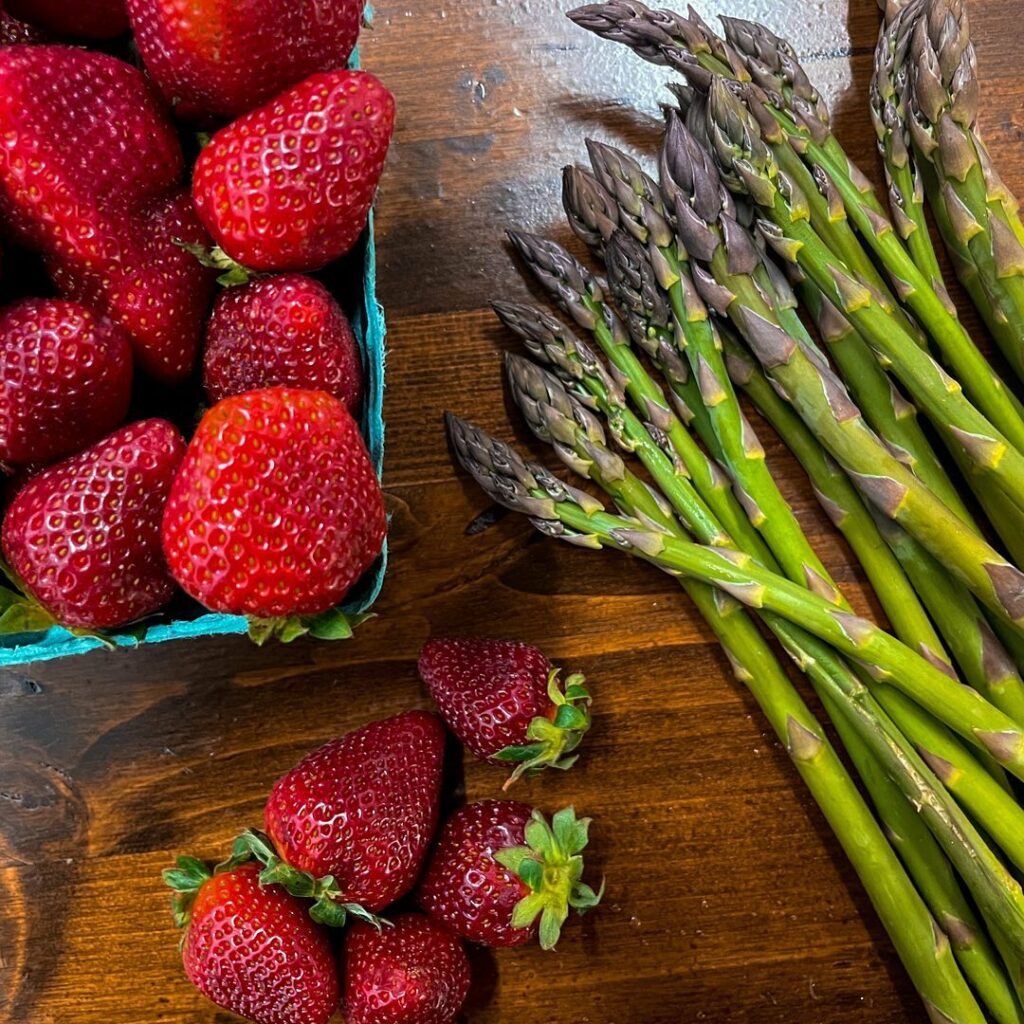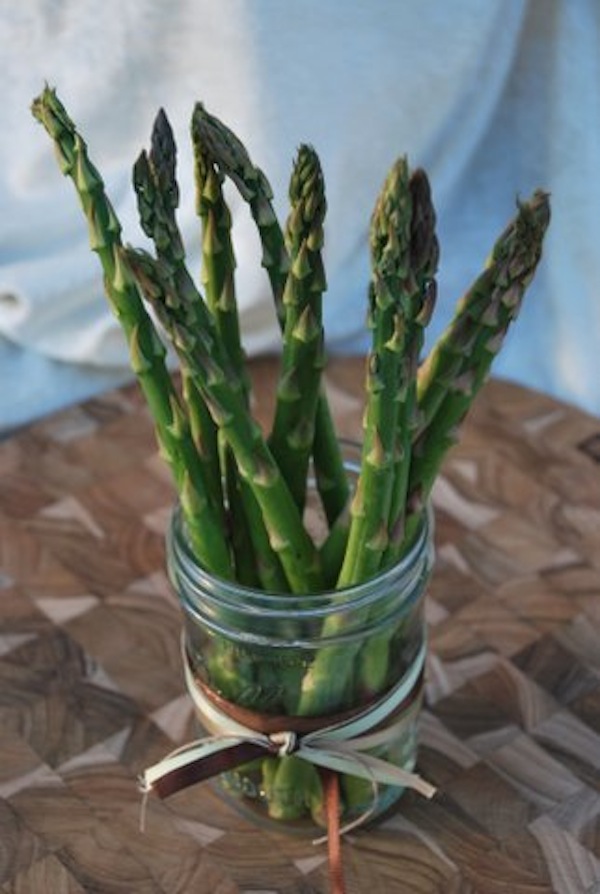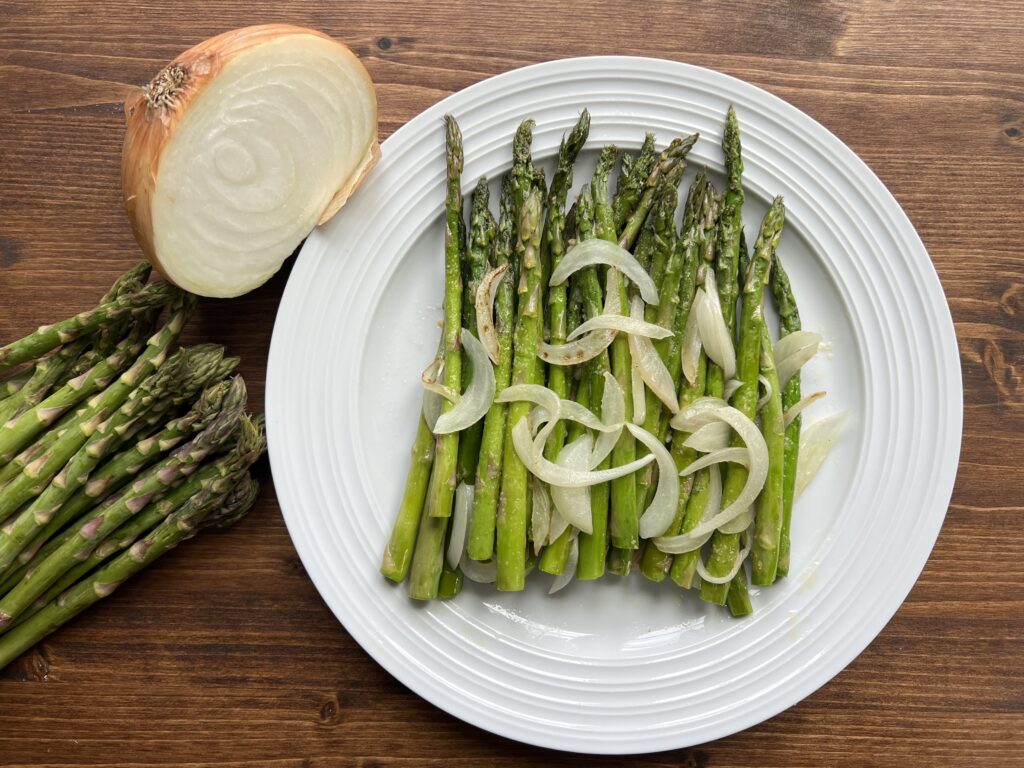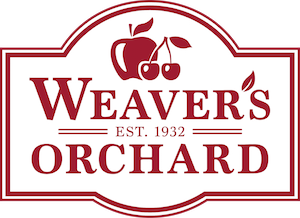
“Asparagus is one of the earliest vegetables each spring, and many times it’s a surprise as it begins to poke its head through the earth early in April here at Weaver’s Orchard,” says our president, Ed Weaver.
“The growth has been very manageable and slower this year due to the cooler temperatures we’ve had. Other years, when we’ve had temperatures into the 80’s it can be a challenge to keep up with harvesting it daily,” Weaver continued.
Ed’s favorite way to eat it is baked with some olive oil and the grated cheese of your choice on top. That’s basically the recipe we share below, with the addition of Vidalia onions!

Not only is asparagus delicious, it’s also packed with nutrients that make it one of the top super foods out there. Have you tasted the difference of fresh, homegrown asparagus? It’s a treat you don’t want to miss!
Health Benefits of Asparagus
Each tender spear of asparagus is loaded with antioxidants and boasts an impressive array of nutrients. Here are three health benefits of asparagus:
- Rich in Nutrients: Asparagus is low in calories and packed with essential nutrients such as vitamins A, C, E, and K, as well as folate, fiber and antioxidants.
- Anti-Inflammatory Properties: The antioxidants in asparagus have anti-inflammatory effects, which may help lower the risk of certain conditions like heart disease and cancer.
- Improves Heart Health: Asparagus contains folate and potassium, which are beneficial for heart health and lowering blood pressure.
A Labor of Love
Many people don’t realize the dedication required to grow asparagus. According to the Michigan Asparagus Advisory Board, “An asparagus planting is usually not harvested for the first three years after the crowns are planted, allowing the crown to develop a strong fibrous root system.” So, when you enjoy your asparagus, you’re savoring the result of years of careful cultivation.
Not to mention, buying homegrown asparagus from our farm reduces food miles, which helps lower emissions, ensures fresher produce and is more eco-friendly and sustainable.

Keeping It Fresh
To keep your asparagus fresh longer, cut a bit of the stalk off and store the stalks upright in a container (such as a wide mouth mason jar) with a few inches of water. This keeps them firm and flavorful.
A Simple, Delicious Recipe
One of my favorite ways to enjoy asparagus is by sautéing it with another spring favorite: Vidalia onions. Vidalia Onions are another delicious flavor of spring, only available for a limited time every year. These sweet onions are cultivated in Vidalia, Georgia and are typically available around Memorial Day. Here’s a quick and easy recipe to bring out the best in these two ingredients.

Sautéed Asparagus and Vidalia Onions
Ingredients:
- 1 bunch of fresh asparagus, trimmed
- 1/2 of a large Vidalia onion, thinly sliced
- 2 tablespoons Extra virgin olive oil
- Salt and pepper to taste
- Parmesan cheese (optional)
Instructions:
- Cut the ends off the asparagus, about 1-2 inches back.
- Heat the olive oil in a large pan over medium heat.
- Add the sliced Vidalia onion and cook until it starts to become translucent, about 3-4 minutes.
- Add the asparagus spears to the pan. If they’re thick, you might want to cut them into bite-sized pieces first.
- Sauté the asparagus and onions together, stirring occasionally, for about 5-7 minutes or until the asparagus is tender but still crisp.
- Season with salt and pepper to taste. If you like, sprinkle a bit of grated Parmesan cheese or the cheese of your choice over the top just before serving.
- Serve it as a side with your favorite main dishes, or make one of our favorite asparagus pasta recipes.

Serve your sautéed asparagus and Vidalia onions warm, and enjoy the fresh, vibrant flavors of spring on your plate. Bon appétit!
